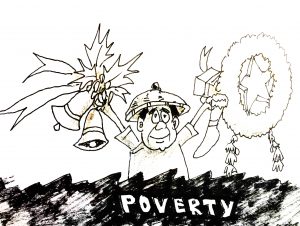The holiday season often brings joy and excitement as people decorate their homes with twinkling lights, magnificent trees, and elaborate displays. However, it is disheartening to witness the existence of lavish and costly Christmas decorations juxtaposed with prevailing poverty.
In our country, the holiday season is associated with delivering feelings of warmth, unity, and abundance. However, within the broader context of poverty, these lavish decorations bear witness to socio-economic disparities. Individuals and communities immersed in poverty could perceive these ostentatious displays as a means to escape their daily struggles, making their deprivation even more palpable. Moreover, the pressure to conform to societal expectations, driven by commercial interests and advertising, perpetuates a culture where people feel compelled to spend exorbitant amounts on decorations, oftentimes at the expense of meeting more pressing needs.
The desire to create beautiful and festive environments during Christmas is often driven by psychological needs for belonging, status, and happiness. People living in poverty may experience a heightened sense of isolation and exclusion during this period, fueling their yearning for recognition and celebration. This psychological drive can lead to the pursuit of expensive decorations as a way to meet emotional needs. Ironically, however, the extravagant displays may only deepen the psychological gap, as they magnify the difference between those who can afford them and those struggling to make ends meet.
Societal and cultural expectations surrounding Christmas celebrations play a significant role in shaping spending patterns. Media portrayals of idealized holiday festivities, emphasizing opulence and grandeur, perpetuate unrealistic ideals and fuel consumerism. Advertisements featuring elaborately decorated homes and luxurious gifts create a narrative where spending is equated with love and care. This cultural pressure, combined with a lack of financial literacy and impulse control, can drive individuals to seek expensive decorations and gifts as a means to validate their social worth and assimilation into mainstream culture.
As the festive season beckons, the paradox between lavish Christmas decorations and ongoing poverty is an issue with deep-rooted societal and psychological implications. Both socio-economic disparities and cultural influences contribute to the perpetuation of this paradox while exacerbating the psychological toll it takes on those living in poverty. Why not dismantle that paradox and foster a more equitable celebration of the season?




